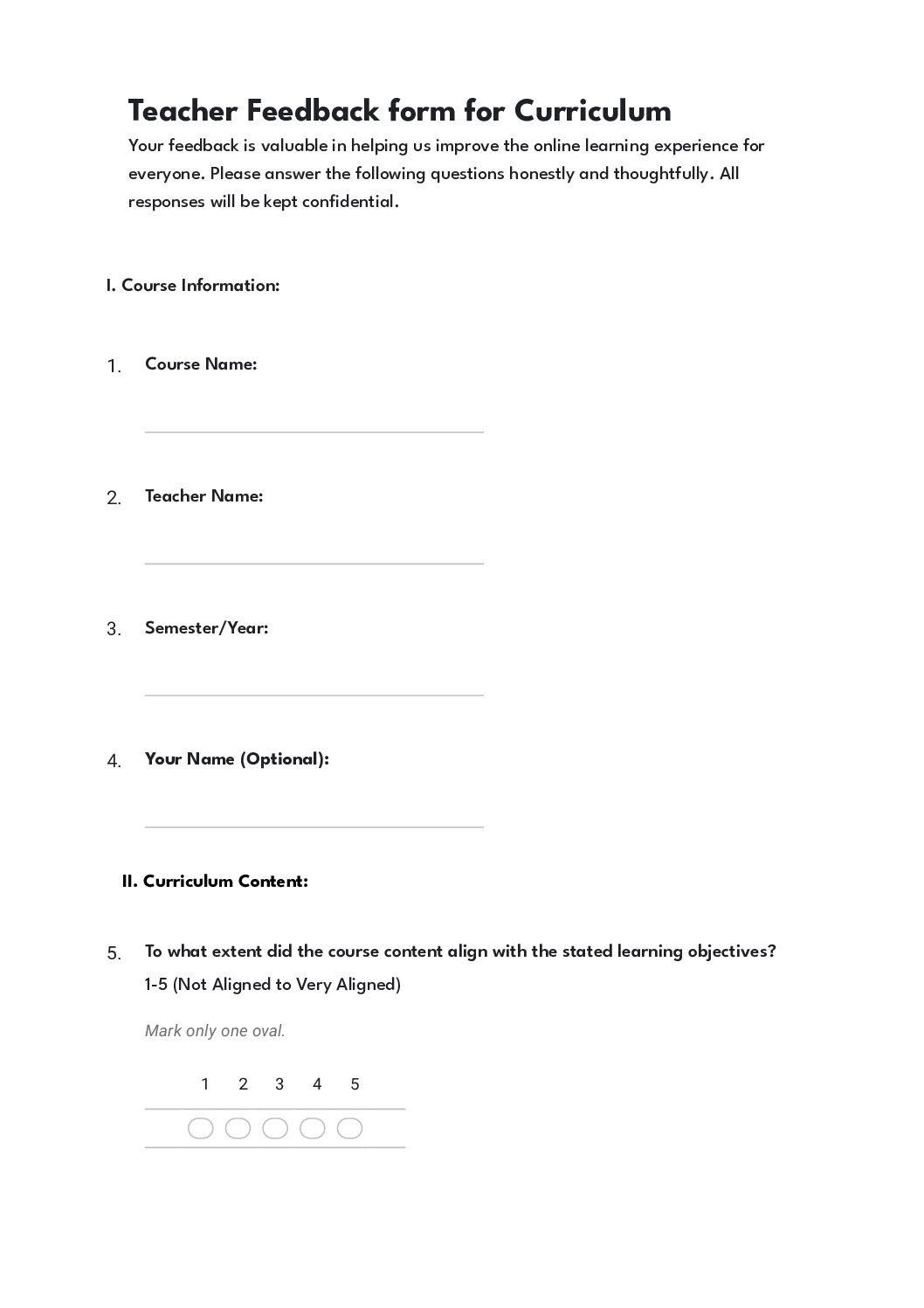Teacher Feedback form for Curriculum
FREE
Transform your teaching journey with our dynamic Teacher Feedback form for Curriculum. Crafted on Google Forms, it’s effortlessly customizable, shareable with prospects, and embeddable on your website. Whether collecting online or printable responses, this tool empowers educational institutions to gather valuable insights from students and parents, evaluating the curriculum’s effectiveness. Constructive feedback serves as a compass, guiding learners towards their goals by aligning actions with desired outcomes. Elevate your teaching experience by embracing feedback that propels continual improvement in the academic journey.






